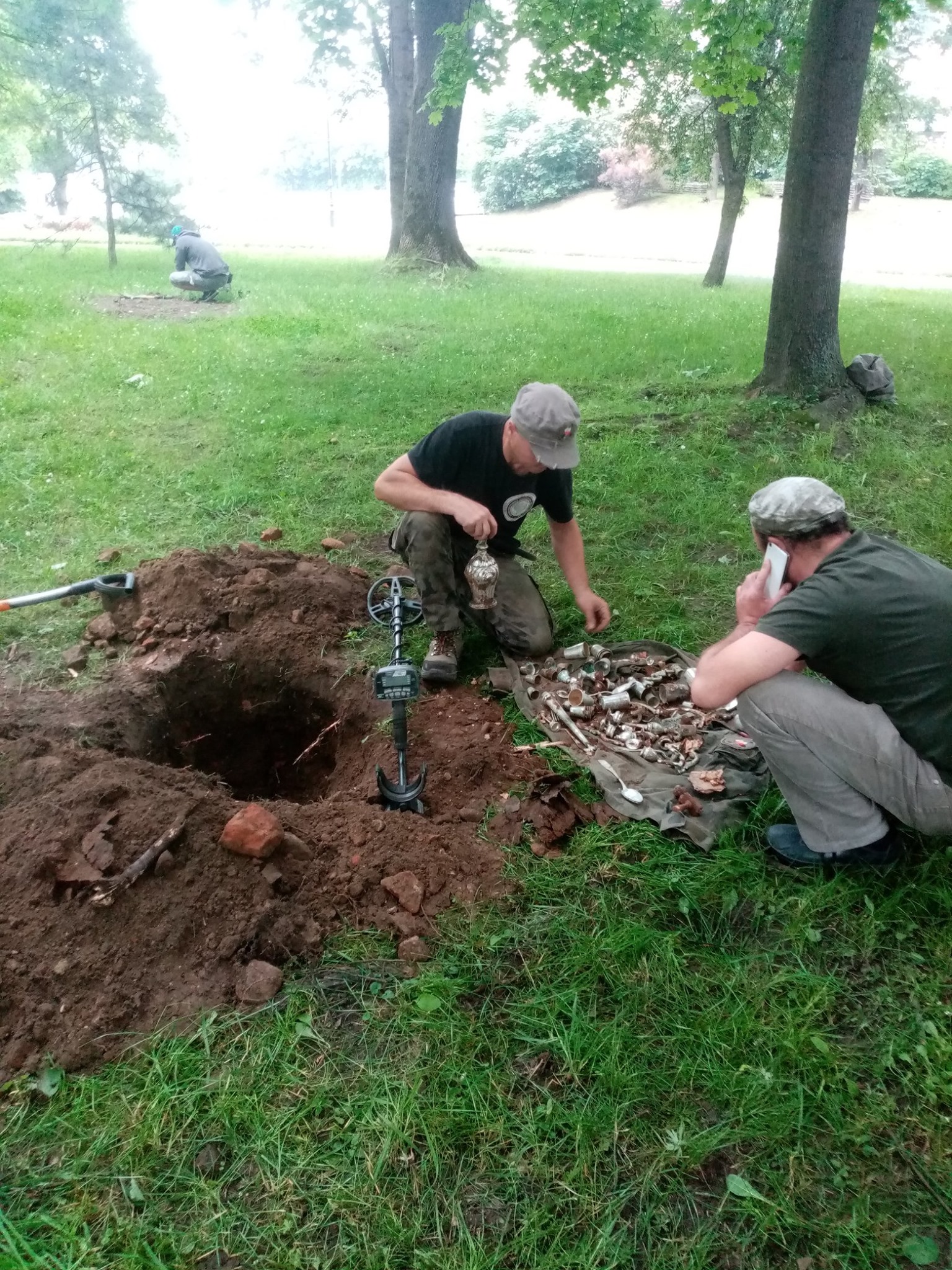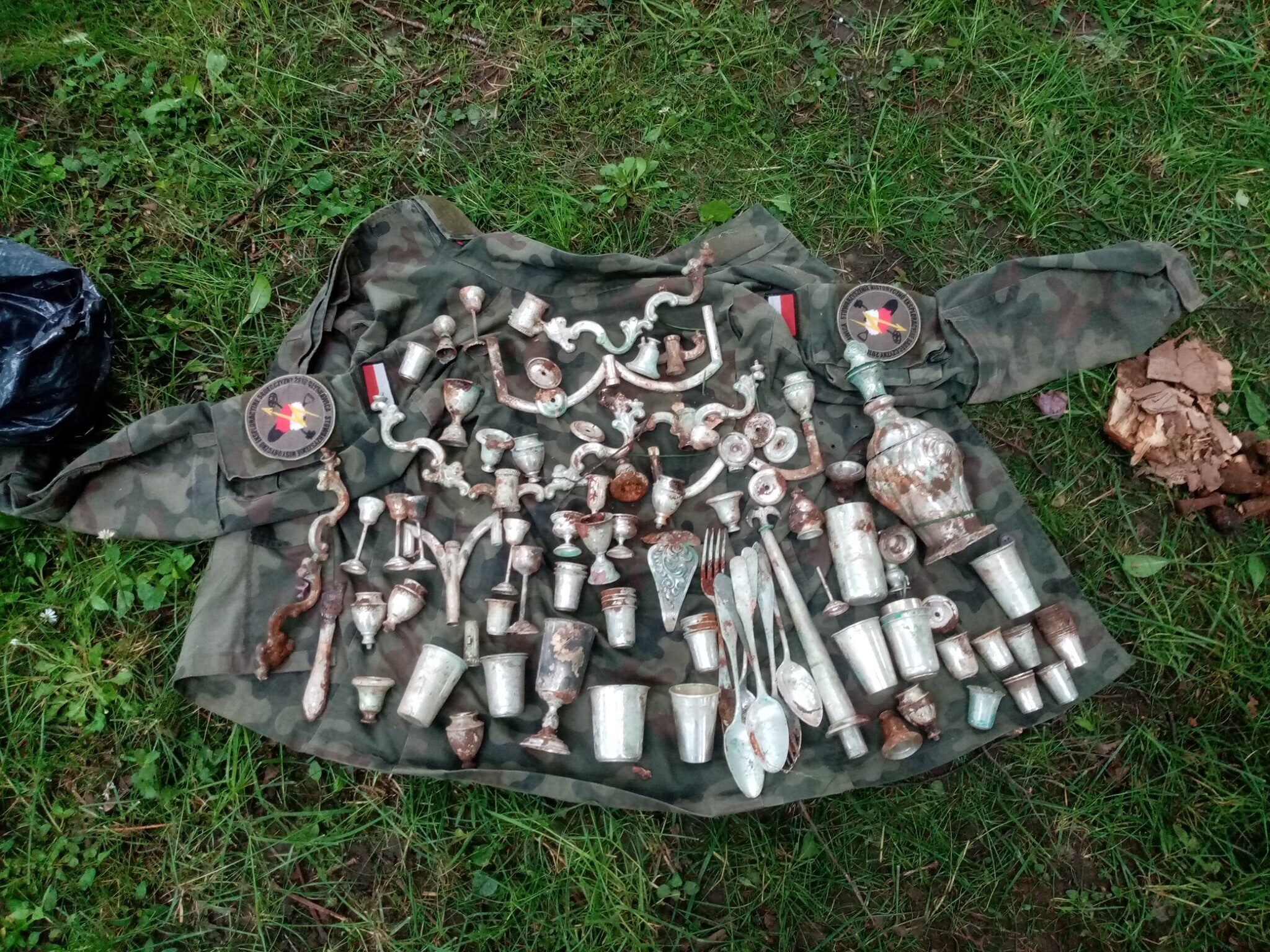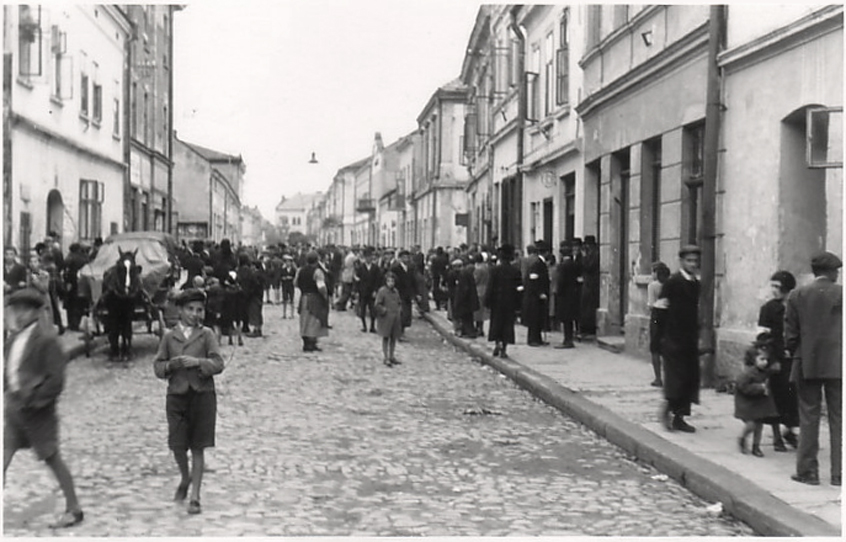Díky za článek 
In the grounds of a 14th-century Polish castle, detectorists discovered a Jewish treasure from World War II
Categories: Treasures , Finds and rescue research abroad
A depot of silver artefacts hidden in the period around the Second World War was discovered in the ruins of a castle in Nowy Sącz in southern Poland. Detectorists from a local association were searching for possible WWII munitions near the castle tower when a representative of the association reported a very strong signal. At first, he thought he had just come across a rusty piece of metal. But after removing it, he found a silver treasure in excellent condition.
In a corroded box on top lay papers, receipts and other documents, but in almost illegible condition. Underneath were silver vessels, cups, drinking cups, cups, cutlery, serving vessels and candlesticks. In total, 103 silver Jewish ceremonial objects were found in the collection.
The finder was the chairman of the detector association, Stanisław Pustułka, who described the first moments as follows: 'First we began to gently remove the paper on top, which appeared first. It was in very bad condition. After a while we saw silver. Lots of silver!"
"This is Judaica probably from the turn of the 19th century, associated with Jewish rituals. It was probably deposited during World War II," explained archaeologist Bartłomiej Urbański, who led the archaeological detector survey around the castle. And he asked the question: "Can we associate the treasure with any of the buildings in the nearby part of the city, or was it stolen by the Germans, who didn't manage to take it away later?"
The town of Nowy Sącz was founded by Czech King Wenceslas II in 1292 - eight years before he became King of Poland. Its location near an important trade route to Hungary brought the town significant privileges. Wenceslas replaced the original wooden watchtower on the hill inside the city fortifications with a modern castle. In the mid-14th century, King Casimir III, called the Great, expanded the castle by integrating it into the newly built defensive wall around the town. At this time, Nowy Sącz gained two corner towers, a residential building with several annexes and probably a moat which separated the castle from the town.
For the next centuries, Polish kings and queens and visiting Hungarian and Danish royalty resided here. The castle burned down in 1522, was rebuilt and burnt down again in 1611. After this second fire, the castle was rebuilt as a chateau and extended in the Renaissance style by Count Sebastian Lubomirski and his son Stanisław. In 1655 the castle was severely damaged during the Swedish invasion of the Polish-Lithuanian Commonwealth.
In 1938 the former castle was rebuilt again and rapidly reduced in size. Unfortunately, just at the time of the German invasion of Poland. The castle was occupied by the Nazis and used as a barracks. During the German occupation, over 20,000 Nowy Sącz Jews were forced into isolation in the ghetto. In 1942, the ghetto was abolished and all Jews were sent to the Bełżec extermination camp, where they were murdered. Only two people survived internment in the camp and managed to escape. At that time, the Germans stored a large amount of ammunition in the castle, which was later blown up by Polish partisans in 1945, along with most of the castle. In 1959, the part of the castle with the tower was reconstructed.
Only parts of the original 14th-century castle structure remain. The town of Nowy Sącz wants to rebuild the castle again and turn the tower into a museum. The Regional Development Agency and the local detector association are systematically searching the castle ruins under the supervision of archaeologists. After conservation, the artefacts from the treasure will be exhibited in the local museum.
Interestingly, the chest containing the Jewish silver treasure was discovered just 20 metres from the site where a hoard of 50 denarius coins from the 15th century was found earlier this year. They lay only 10 cm underground and were discovered by the same team of detectorists from the local search association during a previous archaeological event.
Roman Němec

The treasure was found by detectorists from the local detectorist association in cooperation with archaeologists.
More than 20,000 Jewish citizens of Nowy Sącz were cruelly executed in the Belzec extermination camp.

Jewish set of silver ritual objects
Sources: thehistoryblog.com, thefirstnews.com, thesun.co.uk
The article is included in categories:















